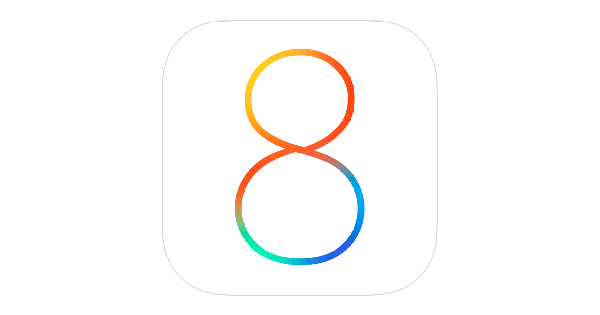
Apple announced at the iPhone 6 and iPhone 6 Plus event that iOS 8 will be released on September 17.
However, it looks like just like the previous beta versions it is possible for non-developers (i.e. without having their iOS device’s UDID registered with a developer account) to install iOS 8 golden master (GM) that was seeded on September 9th.
So if you can’t wait for a few more days then here are the simple steps to install iOS 8 on your device right now courtesy folks at LifeHacker who have posted the download links for iOS 8 GM.
Please read before proceeding:
- Even though its iOS 8 GM, the public release is likely to be the same build number, and the risks associated with installing the beta version are reduced, please proceed with caution. If you’re on OS X Yosemite beta, then you may want to hold off until the official release as people are reporting crashes.
- Apple could clamp down on this and prevent non-developers from using iOS 8 GM.
- Since the build number of iOS 8 GM and the final iOS 8 version will likely be the same, you won’t get an OTA update to install the final version of iOS 8 when it is released next week. You will have to follow the same process to install it when iOS 8 is released next week.
- Please upgrade iTunes to the latest version – iTunes 11.4, which was released few days back as it supports iOS 8.
Back up
- It is very important to take a backup of your device using iCloud or iTunes. You can refer to our guides if you need any help.
Download iOS 8
- Download the appropriate iOS 8 firmware file for your iOS device. Note these download links on Mega were posted by LifeHacker, so they may be temporary. Download links for all devices are not available as LifeHacker has sourced it from anonymous public postings. If you’re not sure which model you have, then check this link for iPhone, and this one for iPad. Please remember these downloads are unofficial, so proceed at your own risk.
- iPhone 5s(GSM)
- iPhone 5s(CDMA)
- iPhone 5 (CDMA + GSM)
- iPhone 5 (GSM)
- iPhone 5C (CDMA)
- iPhone 5C (GSM)
- iPhone 4S
- iPad 2 (Wi-Fi)
- iPad 2 (Wi-Fi + GSM)
- iPad 2 (Wi-Fi +CDMA)
- iPad 2 (Rev A)
- iPad 3 (Wi-Fi)
- iPad 3 (Wi-Fi + GSM)
- iPad 3 (Wi-Fi + CDMA)
- iPad 4 (Wi-Fi)
- iPad 4 (Wi-Fi + GSM)
- iPad 4 (Wi-Fi + CDMA)
- iPad Air (Wi-Fi)
- iPad Air (Wi-Fi + GSM)
- iPad Air (Wi-Fi + CDMA)
- iPad Mini (Wi-Fi)
- iPad Mini (Wi-Fi + GSM)
- iPad Mini (Wi-Fi + CDMA)
- iPad Mini with Retina (Wi-Fi)
- iPad Mini with Retina (Wi-Fi + GSM)
- iPad Mini with Retina (Wi-Fi + CDMA)
- iPod Touch 5th Generation
Install the iOS 8 Update
Follow these instructions to install iOS 8:
- Extract the .ipsw file from the dmg file. If you’re on a Mac, double click on the file to mount the dmg file. You will see the new mount under Devices in the Finder app, which has the .ipsw file. If you’re on Windows, you will need to use tools like 7-Zip to do this, and will need to open the .hfs inside the .dmg as well. Copy the .ipsw file to your Desktop.
- Now open iTunes and connect your iPhone, iPad or iPod touch to your computer.
- Hold down on the option key (Mac) or the shift key (Windows) and click on the Check for Update button in the Summary tab.
- Browse to the .ipsw file and select it and wait for the update to finish.
- If necessary, restore your device from the previous backup and sync with iTunes.
That’s it. You should have an iOS device running iOS 8 (iOS 8 GM technically speaking). LifeHacker confirms that they’ve been able to install iOS 8 on a number of devices using these steps.
Please don’t forget to let us how it goes.
[via Lifehacker]